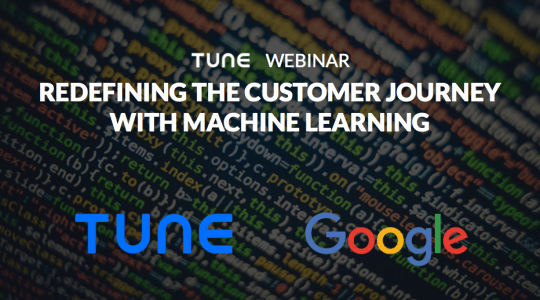The mobile ecosystem has experienced something of a re-engagement renaissance over the past year. Mobile marketers have come to understand that building an active user base requires more than just user acquisition. At the same time, several influential organizations have made acquisitions or introduced tools and technologies with a clear re-engagement emphasis.
This collective evolution should come as no surprise, as many app developers and marketers continue to struggle with user engagement. The following statistics help illustrate this challenge:
- 24 percent of apps are used precisely one time.
- 26 percent of users are active 24-48 hours from the first session (a number which decreases to 13 percent seven days after the first session).
- Only 40% of apps are used more than 11 times.
Mobile re-engagement campaigns are specifically designed to target users that have already downloaded your app but have not interacted with it for an extended period of time. The goal of these campaigns is to encourage your dormant users to return to your app and remain active over time. This article discusses four distinct re-engagement strategies:
- Deep linking
- Push notifications
- Paid social
- Paid search
These four strategies and the best practices discussed below will help you design and implement effective campaigns that bring users back into your apps.
Mobile Re-Engagement: Strategies and Best Practices
Deep Linking
The technological framework that mobile apps are built upon is different than the HTML framework of websites on the World Wide Web. Consequently, the ability to link from any page to any other page – a characteristic we take for granted on the web – is not inherently built into apps. Deep linking is a technology that enables apps to be interconnected in a way that is similar to what we experience on the World Wide Web. And with this linkability, apps are able to offer a far superior user experience.
In the past, the ability to link to apps was extremely limited. In fact, app developers and marketers were only able to link to the home screen of the app, and then hope that users would be able to search and navigate through the conversion processes. But with deep linking, re-engagement campaigns can link users directly to the most relevant and meaningful screen in the app. This removes any unnecessary taps, reduces friction, and greatly improves the user experience – all of which contribute to higher conversion rates.
Deep Linking Best Practice
Use it! All of the re-engagement strategies mentioned below are designed to take advantage of deep linking. Instead of sending your users to a home screen where they are forced to browse and search, use deep links to send users directly to the most relevant screen in your app.
Push Notifications
Push notifications are messages or alerts generated by the app that notify the user of an event or other activity without requiring the user to open the app. Push notifications are a permission-based form of marketing and work in a similar manner to text messages, as they typically create a sound and display a message on the user’s mobile device.
Push notifications have a reputation for helping keep users engaged. For example, one study found that apps with push messaging had an 88% higher engagement rate. Some of the same push strategies that encourage frequent engagement, can also be used to re-engage users who have gone dormant for an extended period of time.
Examples of push notifications for re-engagement include:
- A sports-related app might notify users of the score during or after a game.
- A gaming app could offer users digital currency or a free life.
- A music app might alert users of recently released music.
- A news app might notify might notify users of breaking news.
- A retail app could send users a message featuring an exclusive offer or discount – or in this example, that an item is now in stock:

Push Notifications – Best Practices
The right message at the right time: Push notifications are all about precision. Most users have dozens of apps installed on their device, and too many notifications and alerts can quickly become overwhelming. Apps with the most frequent push notifications are the first to be silenced, especially if the notifications are irrelevant. The message should also be meaningful and clearly be written by a person. Your app won’t last long if users feel like they’re being spammed with worthless information by a bot.
Ask permission first: Users are generally open to receiving relevant and useful information, but they want the ability to control it. Push notifications should be an opt-in practice and the ability to turn push notifications off should always be clearly and easily accessible.
Paid Social
Re-engagement through paid social has seen vast improvement over the past year. In terms of aesthetics, native design has dramatically improved the look and feel of re-engagement ads and limited the disruption that often accompanies other forms of advertising. In addition, the technology to target your existing users has also improved. For example, on Facebook and Twitter you can upload lists of users that have already downloaded your app, and through their Mobile Advertiser ID, email address, mobile phone number, user ID, or username, serve a targeted re-engagement ad.
Here are a few examples of what these re-engagement ads might look like on Facebook for a gaming, music provider, and retail app. These ads are displayed seamlessly in the user’s Facebook news feed:

Paid Social – Best Practices
Target by conversion platform – Identify which platform was responsible for driving the app install and use the same platform for the re-engagement campaign. In other words, if a user was originally acquired on Twitter, use Twitter for the re-engagement campaign. The success you’ve already seen on the platform (i.e. the initial install) is a good indicator that the user will respond to re-engagement efforts.
Experiment – Experiment with the timing of your re-engagement campaigns, and the creative elements of your ads, including the images used, call-to-action (CTA), ad copy etc. As you measure the results you can gain insight into what campaign characteristics are most effective.
Paid Search
Paid search is an emerging re-engagement strategy which enables mobile marketers to have their ads featured in the search results of specified keyword queries. Through this technique re-engagement ads are placed at the top of the search results and include a CTA to drive the user into the app. These re-engagement ads only appear in the user’s search results if they already have the app installed.
A paid search example provided by Google illustrates how search results for “hotels San Francisco” would appear for a user that already has the HotelTonight app installed on their device. The HotelTonight ad is displayed at the top with a CTA to Open the app. When a user taps the button, they would be taken to a screen inside the HotelTonight app featuring hotels in San Francisco.
Paid Search – Best Practices
Choose your keywords wisely: There are several free tools to help you find the right keywords, and it’s important to do your research and get it right. Try to select words that are highly relevant to your app, but not overly competitive.
Link to a relevant screen: If you have deep linking enabled in your app, be sure to send your users to a relevant screen. In the hotel example above, sending the user in San Francisco to a list of hotels in New York wouldn’t be very helpful. Connecting the user directly to San Francisco hotels (skipping the home screen and search process), is the exact experience the user wants.
Re-Engagement Best Practices
Experimentation is key: It’s important to be aware that all apps are not created equal. Re-engagement performance varies from vertical to vertical and app to app. It’s essential to continually experiment with the timing, copy, image, CTA, and other elements of your ads and notifications until you determine which combinations work best.
Measure campaign performance: Understanding which partners are responsible for driving users back into your app and measuring the associated in-app events gives you significant insight into how to better optimize your re-engagement campaigns. Running re-engagement campaigns without measuring performance leads to wasted ad spend and underwhelming campaign results.
In Summary
Re-engagement campaigns focus on existing users that have not interacted with your app for an extended period of time. In the past, it was common for mobile marketers to focus largely on user acquisition, but the mobile ecosystem has collectively awakened to the reality that re-engagement is fundamental to building and maintaining a quality user base. Through re-engagement strategies like deep linking, paid social, paid search, and push campaigns, you can reach your current users, connect them with relevant content, and encourage them to interact with your apps on a consistent basis.
![]() This article is part of the Mobile Marketing Essentials series.
This article is part of the Mobile Marketing Essentials series.
Author
Becky is the Senior Content Marketing Manager at TUNE. Before TUNE, she handled content strategy and marketing communications at several tech startups in the Bay Area. Becky received her bachelor's degree in English from Wake Forest University. After a decade in San Francisco and Seattle, she has returned home to Charleston, SC, where you can find her strolling through Hampton Park with her pup and enjoying the simple things in life.




Awesome post, Andrew! It’s great to see people taking advantage of paid social campaigns in their mobile marketing efforts.
Leanplum is a comprehensive marketing automation platform that can do everything this article talks about. It’s perfect for running campaigns to re-engage users, run A/B tests to see which campaigns are working better than others, and has detailed analytics to show you the ROI your campaigns brought.
[…] part of the picture. In fact, 13 percent of users delete an app without ever even opening it and 24 percent of apps are used just one time, then forgotten. Conversely, by engaging users with the right push notifications and in-app […]